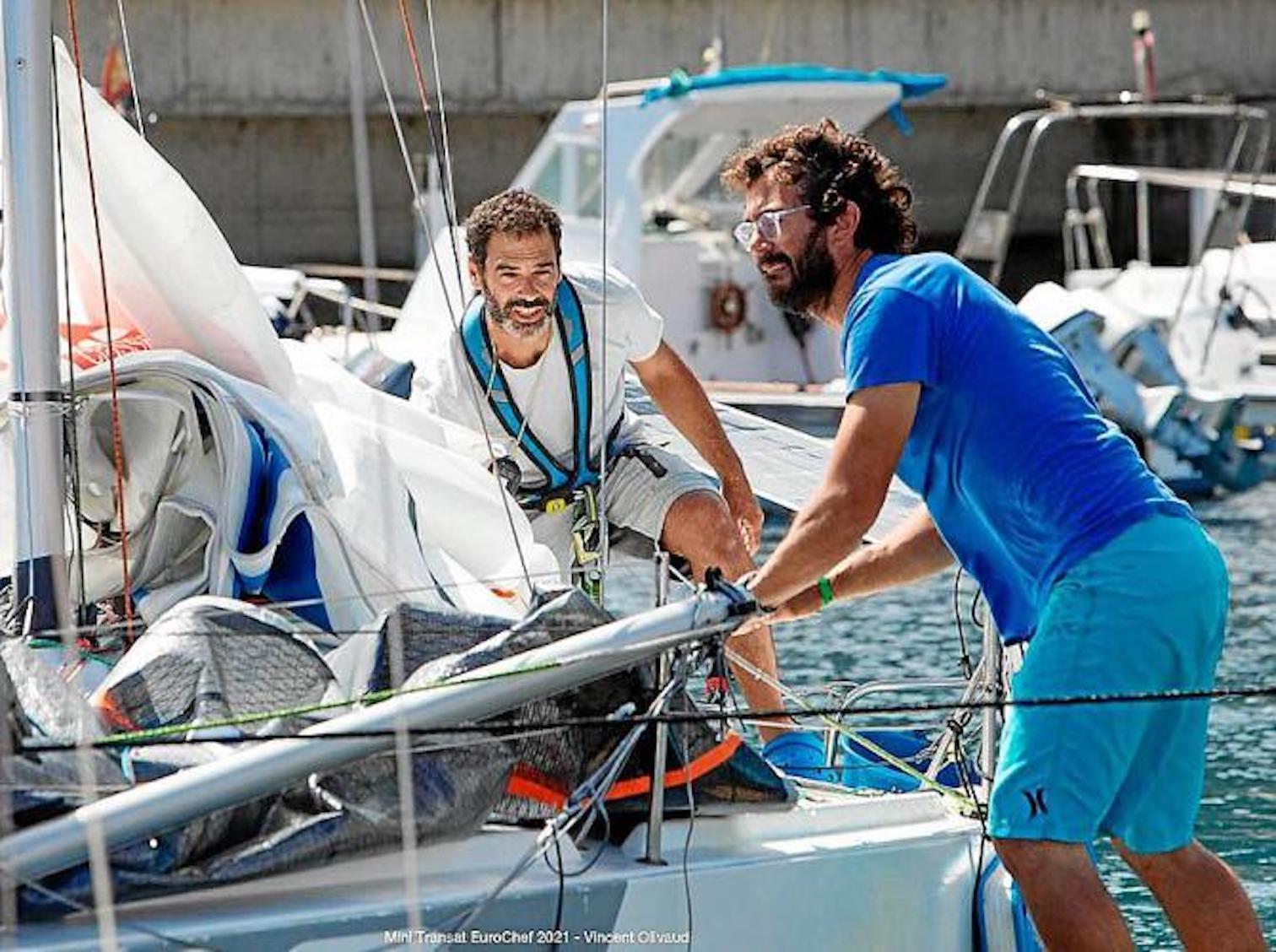Sailors attacked by killer whales during Mini Transat Race

José Linares (left) arriving in Santa Cruz de La Palma. | R.U.
Mallorca-International12/10/2021 11:39
90 sailors are taking part in the Mini Transat race and Mallorcan Navigator, José Linares is in 54th place after the first stage, from Les Sables d'Olonne in France to the Canary island of La Palma.
Also in Holiday
- Mallorca beaches at Soller and Andratx covered by thousands of 'little sails'
- New train service will have 10 kilometre underground section, linked with Palma airport
- The first signs of summer in Mallorca
- The stickers on signs in Mallorca's mountains
- Mallorca hoteliers president: Tourism is being used as "a punchbag"

 A few days in La Palma will allow Linares to recharge his batteries, but he won’t be able to put his feet up for long. He's got a long list of repairs to take care of onboard the 6.5 metre long ‘Vamos Vamos’, which includes mending breaks in the tiller and halyards and fixing a broken rudder blade, before he completes the Mini Transat, which is possibly the most demanding solo transoceanic journey in the world.
A few days in La Palma will allow Linares to recharge his batteries, but he won’t be able to put his feet up for long. He's got a long list of repairs to take care of onboard the 6.5 metre long ‘Vamos Vamos’, which includes mending breaks in the tiller and halyards and fixing a broken rudder blade, before he completes the Mini Transat, which is possibly the most demanding solo transoceanic journey in the world.
No comments
To be able to write a comment, you have to be registered and logged in
Currently there are no comments.